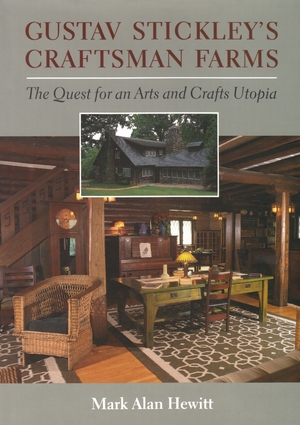Description
From 1911 to 1917 Craftsman Farms—now a major museum—was the home of Gustav Stickley, one of the central figures in the American Arts and Crafts Movement. This book unravels the rich and sometimes contradictory ideas that informed not only Stickley but many of the artists and literary figures of the progressive era in America.
The year 1900 was the fulcrum in a long arc of utopian ideals dating back to Thomas Carlyle, John Ruskin, and William Morris in England, a movement which would eventually lead up to the art communes of the Guild of Handicraft, Woodstock, and the MacDowell colony. Craftsman Farms was at the center of a large group of American experiments in “living the artistic life.” With this book, Mark Alan Hewitt provides a foil for a critical examination of the theories that guided many architects, artists, and craft artisans at the turn of the last century.
Illustrated with specially commissioned photographs as well as many archival photographs from the Winterthur Museum and Library, this book provides both a visual and historical record of Stickley’s life and work during his most fertile creative period.
About the Author
Mark Alan Hewitt is an architect, teacher, writer, and former Winterthur Research Fellow. His previous books include The Architect and the American Country House, 1890-I940 and The Architecture of Mott B. Schmidt.
6 x 8.5, 264 pages, 15 color, 84 black and white illustrations
March 2001



